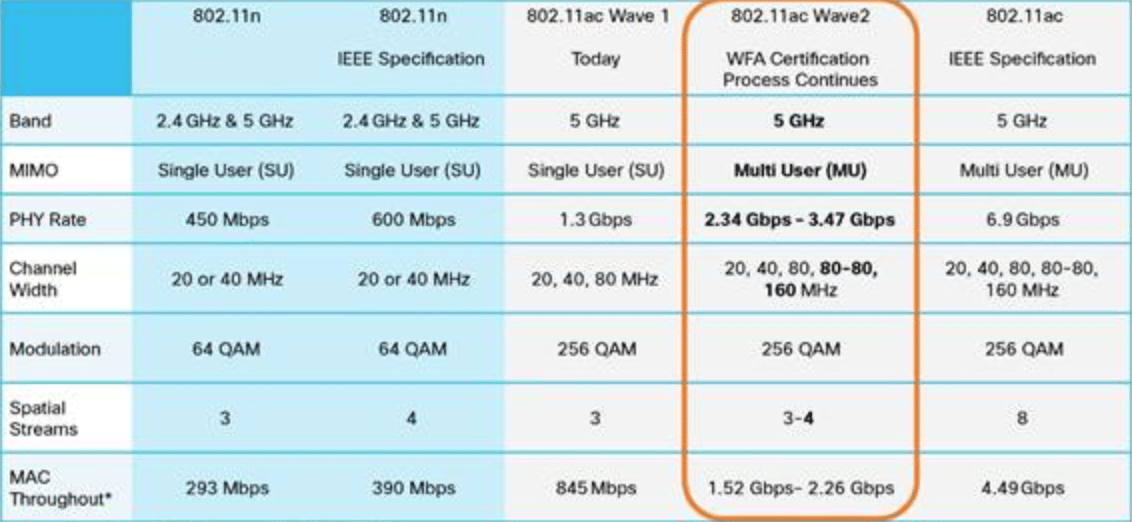IEEE Wi-Fi roadmap calls for continued enhancements with ax, WiGig and ad variants of 802.11 standard
While it’s not the subject of the generational hype cycles that influence the cellular segment—3G to 4G to 5G—the Wi-Fi industry is steadily enhancing the capabilities of the ubiquitous connectivity and has a relatively well-articulated roadmap for where Wi-Fi is going over the next few years.
Right now the cutting-edge of Wi-Fi products are largely based on so-called Wave 2 of the IEEE’s 802.11ac standard. Wave 2, as compared to Wave 1, can push speeds up to about 2.34 Gbps and offers multi-user multiple-input, multiple-output (MU-MIMO). Below is a table from Cisco that highlights the enhancements to Wave 2 as compared to previous iterations of the 802.11 specification.

Image courtesy of Cisco.
Adlane Fellah, CEO of Wi-Fi-focused analyst firm Maraverdis, in a conversation with RCR Wireless News, discussed what’s next for Wi-Fi after Wave 2.
“This week, engineers at the IEEE standards body were expected to green-light the first draft of 802.11ax, which will underpin the next wave of Wi-Fi networks, after two failed attempts. Like 11n, 11ax is very complex and has ambitious objectives. It is targeting an increase in real user data rates of up to 30%, along with a fourfold reduction in latency. It also promises to deliver up to four times more overall data in the same spectrum as 11ac. Access points based on the draft specs are expected to ship in the last quarter of this year, assuming the proposal secures its 75% approval on July 1. However, the late start means the technology will wait until 2019 to gain scale.
“Quantenna, Intel, Qualcomm and others have been sampling pre-standard 11ax chips for nearly 18 months and Japanese MNO KDDI already offers a pre-standard 11ax AP made by NEC using its own chip, the IPQ8078.
“An important next step will be for the Wi-Fi Alliance (WFA), which certifies and sometimes extends 802.11 standards, [is]to complete its interoperability testing (IOT) and certification programs for 11ax. It expects this to be in place by autumn 2019 and has already begun work on conducting IOT using pre-standard chips. The WFA recently voted to make WPA3, the latest version of its security extensions for Wi-Fi, a mandatory part of 11ax certification.
“802.11ad operates at 60 GHz frequency (millimeter waves), which make it incredibly fast but unable to penetrate solid objects like walls, desks and bookcases. Where it does make up for that is in its super high bandwidth capabilities. Indeed, WiGig (Wi-Fi 802.11ad) was developed for very high-speed, short range wireless connectivity such as for connecting CE devices that are near each other – say a 4K net-top box wirelessly streaming flicker-free 4K videos to a TV set and can provide data transfer rates up to 7 Gbps. However, ad hasn’t taken off simply because it has such a narrow market. Not very many people require multi-gigabit speeds in very small networks except those who need to wirelessly stream raw video.”
To learn more about the continued evolution of Wi-Fi, as well as its relationship with 5Gi, check out our upcoming webinar on the topic.
The post The Wi-Fi roadmap: 802.11ax, WiGig and beyond appeared first on RCR Wireless News.
